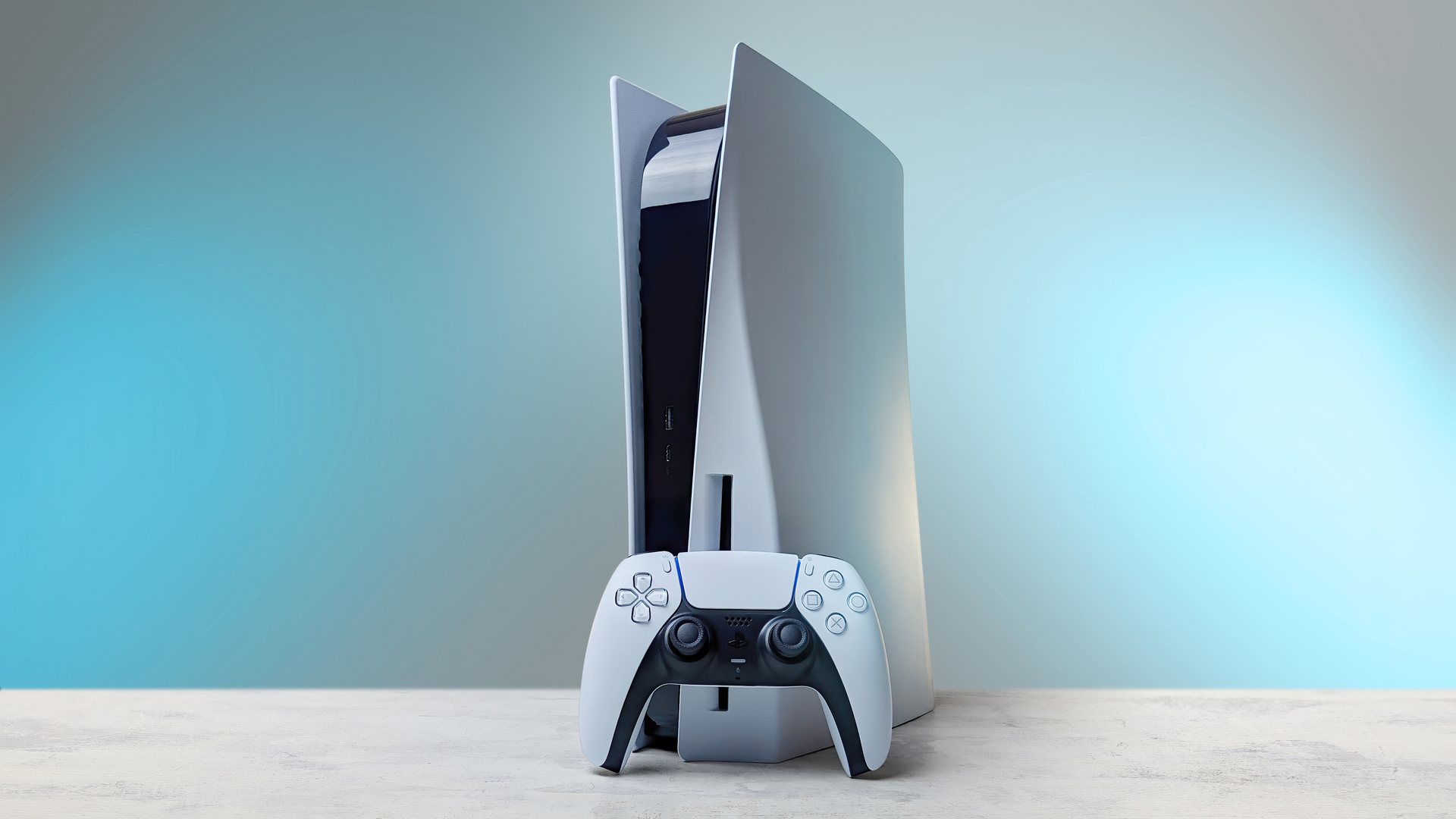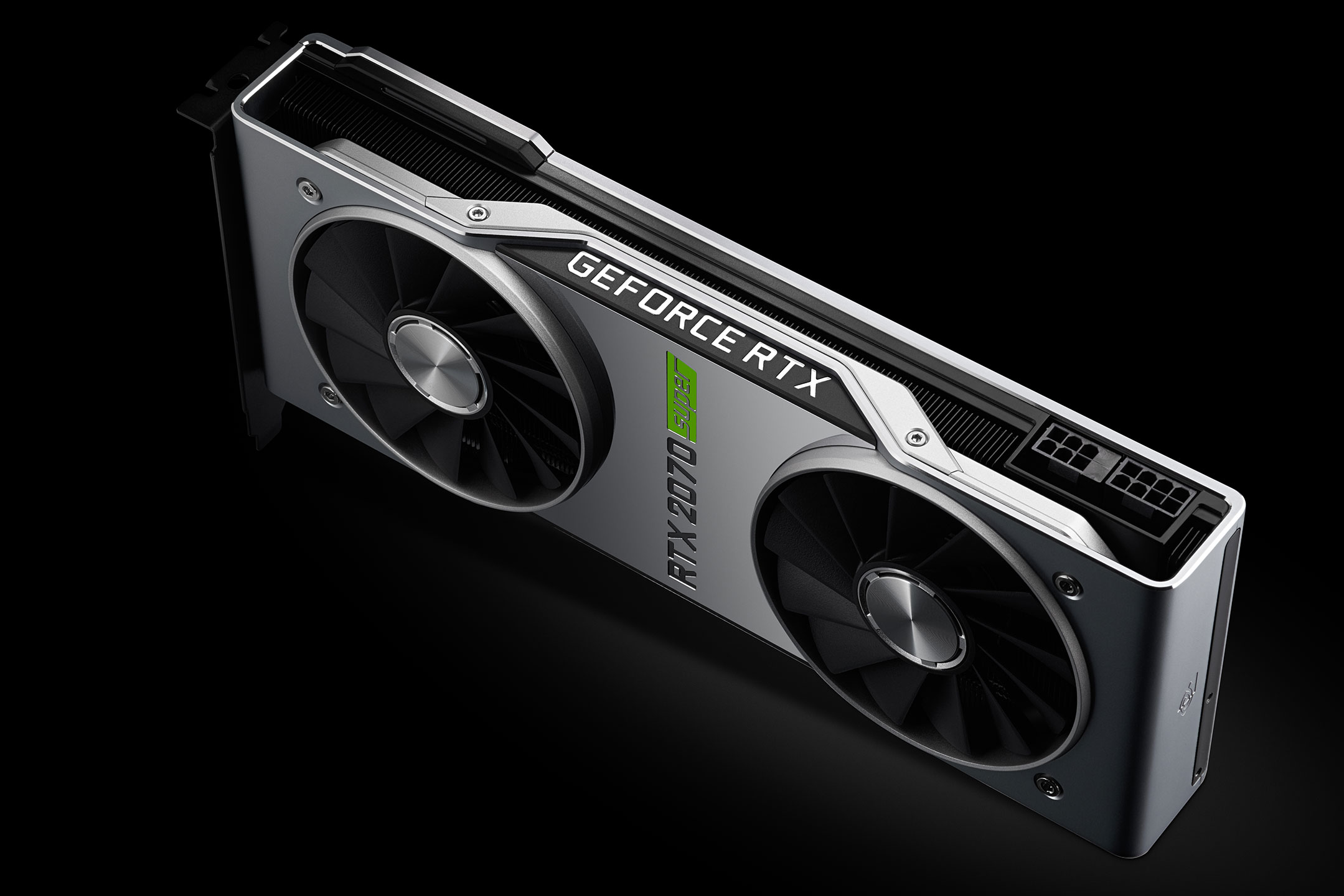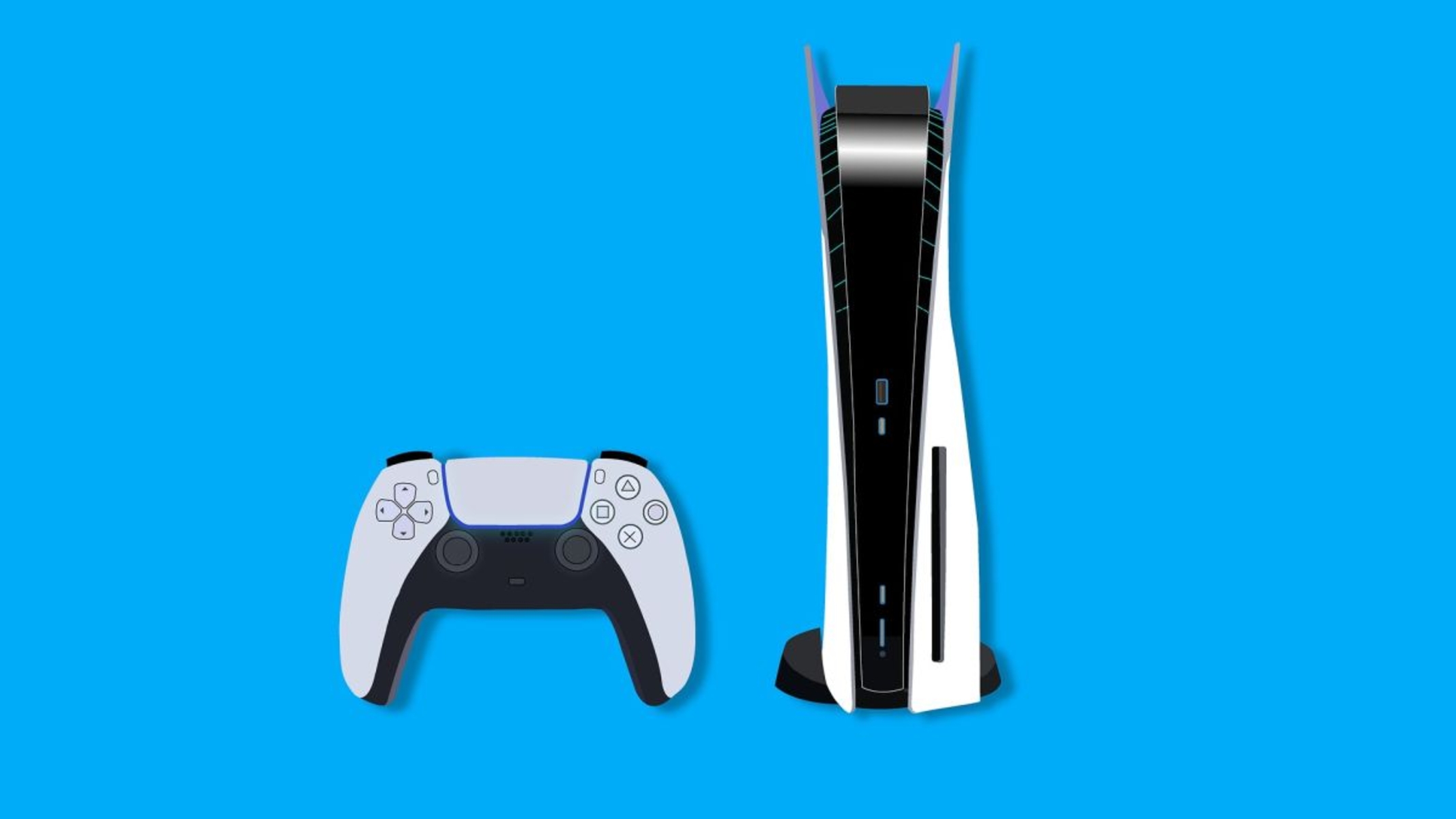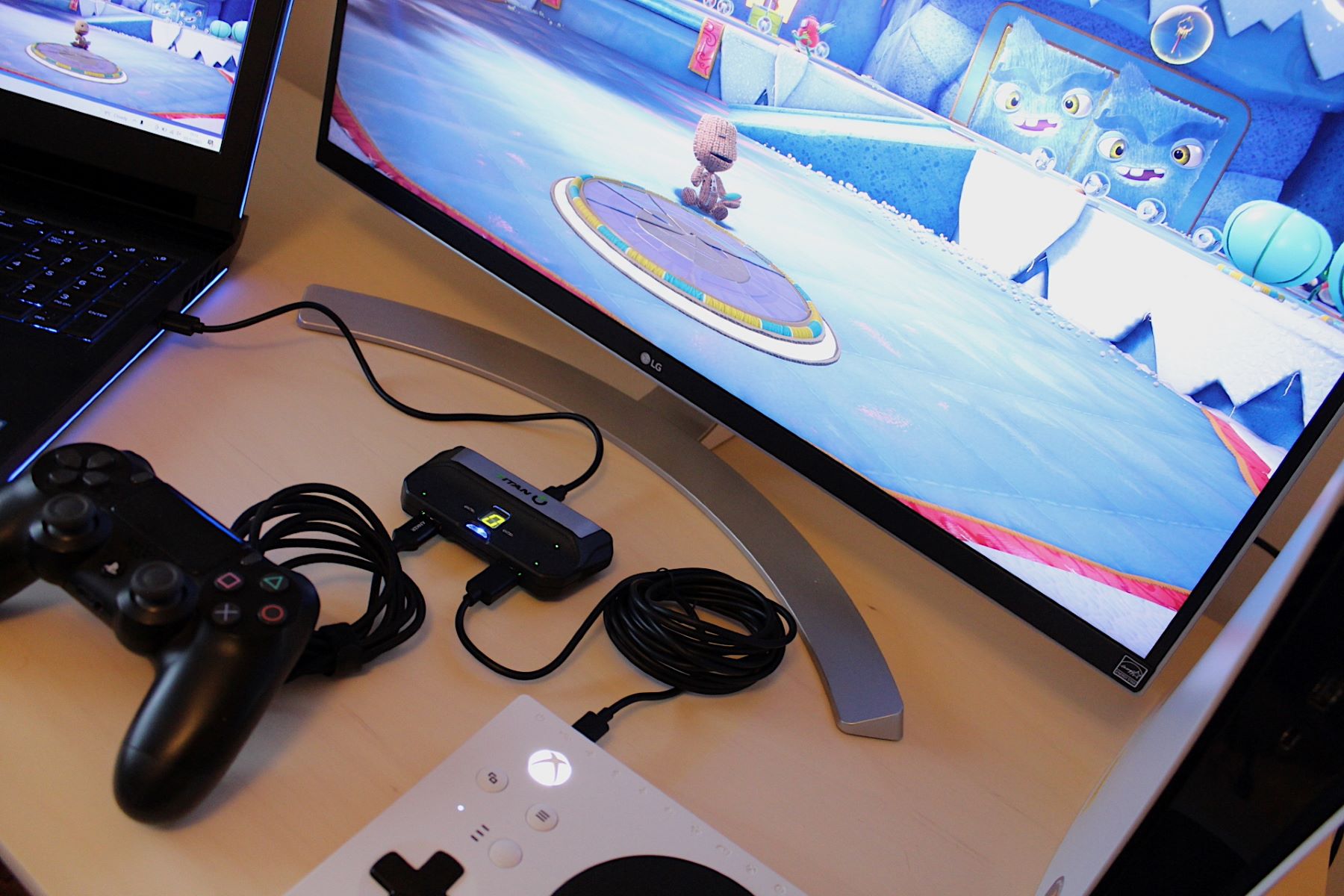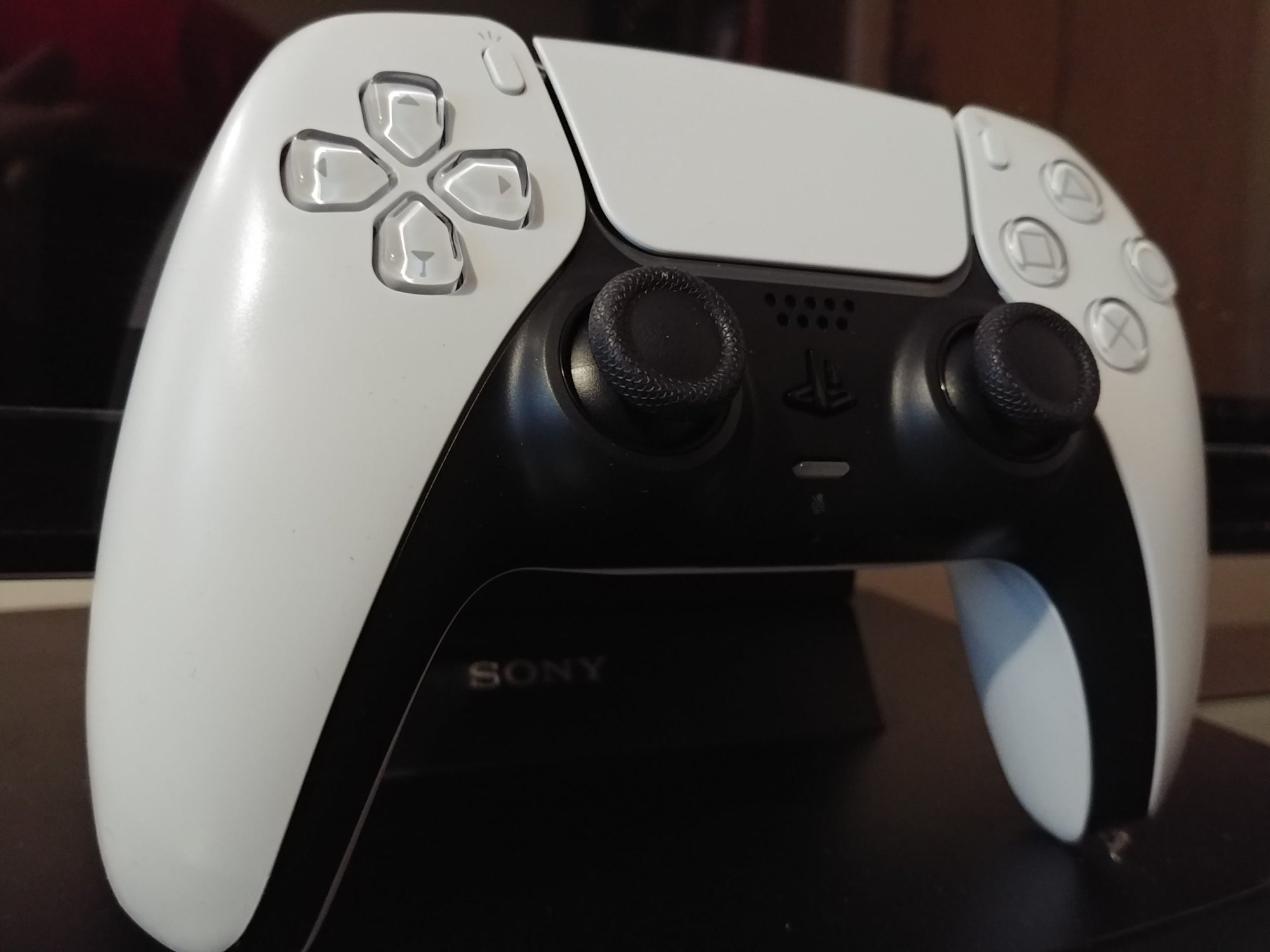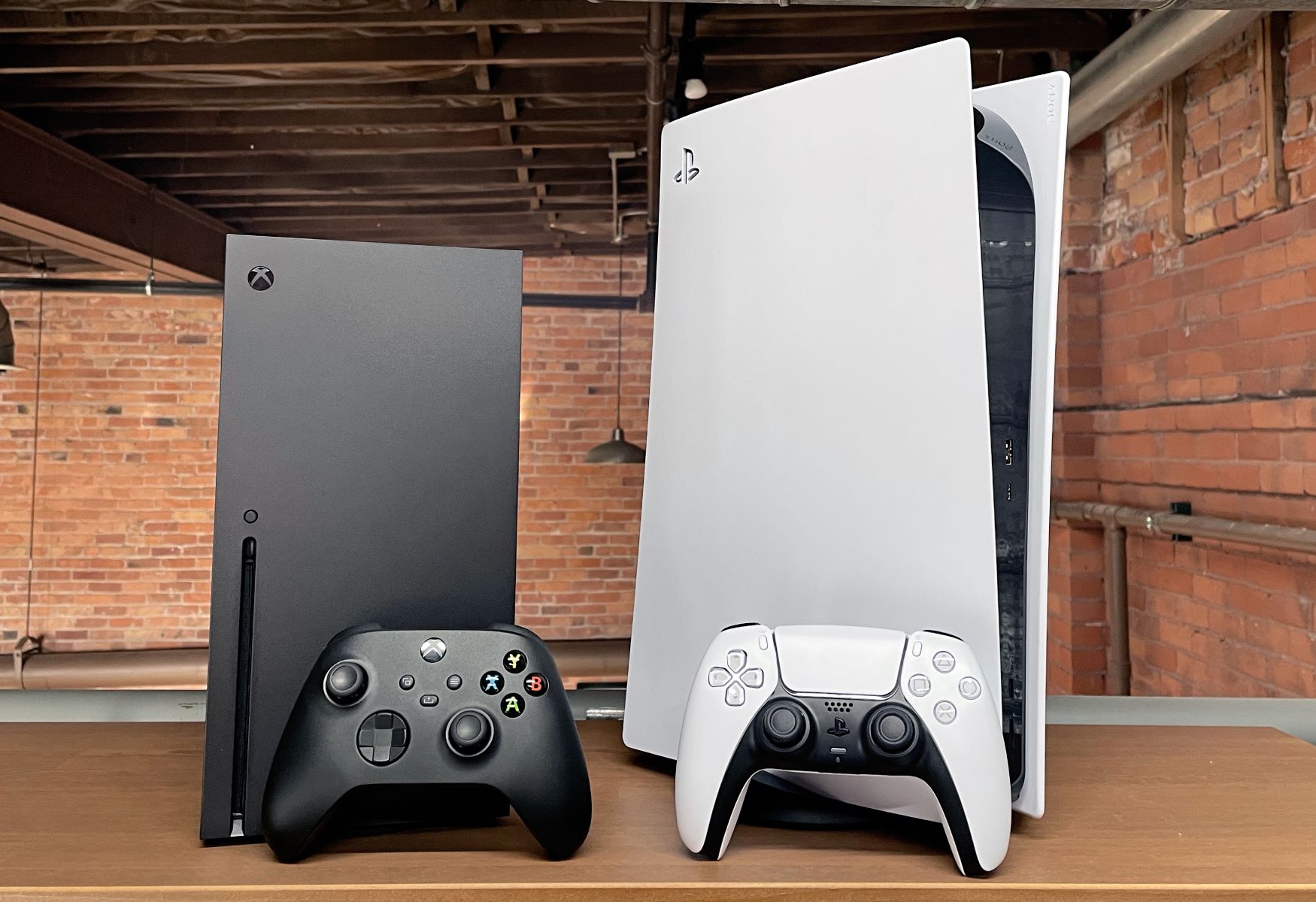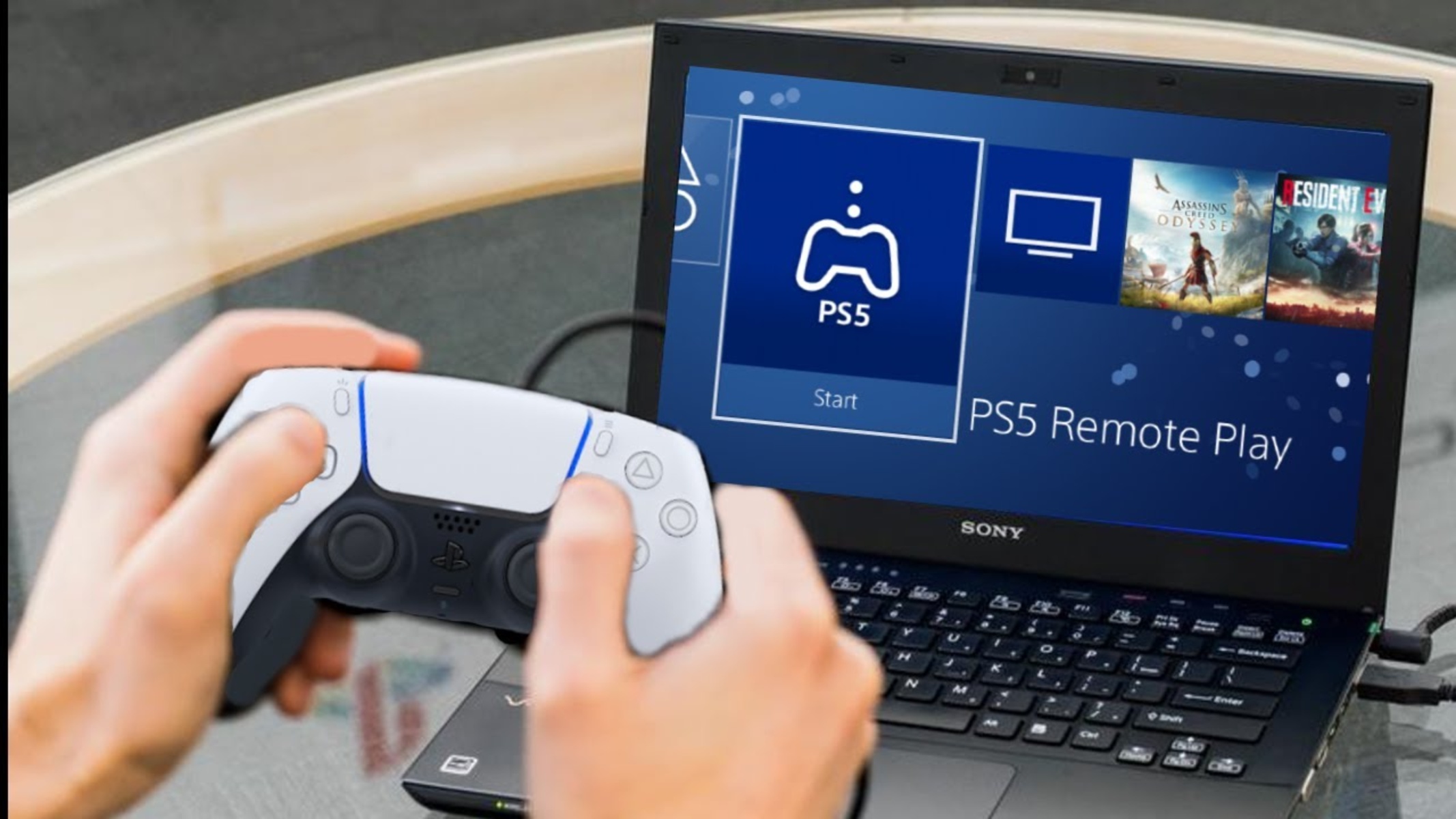Introduction
Welcome to the exciting world of gaming! Whether you’re a casual gamer or a hardcore enthusiast, you know that a key component in any gaming system is the graphics card. A graphics card, also known as a GPU (Graphics Processing Unit), is responsible for rendering images, animations, and videos on your screen. It plays a vital role in enhancing the visual experience and immersing you in the virtual world.
In this article, we will explore the significance of graphics cards in gaming and specifically delve into the graphics card featured in the highly anticipated PlayStation 5 (PS5) console. We will take a closer look at its capabilities, performance, and how it stacks up against graphics cards found in PCs. Additionally, we will discuss the potential for future upgrades and the impact of emerging technologies, such as ray tracing, on the gaming experience.
With the launch of each new generation of gaming consoles, there is always excitement and anticipation surrounding the improvements and advancements in hardware. The PS5 is no exception. Sony, the company behind the PlayStation series, has made significant strides in pushing the boundaries of gaming with their latest offering.
Whether you’re an avid PlayStation fan or simply curious about the future of gaming, this article will provide you with valuable insights into the graphics card that powers the visual experience on the PS5. From its specifications to its performance, we will guide you through everything you need to know about this cutting-edge technology.
So, grab your controller, settle into your gaming chair, and let’s embark on an exhilarating journey into the world of graphics cards in the PlayStation 5!
What is a Graphics Card?
A graphics card, also known as a GPU (Graphics Processing Unit), is a hardware component that is dedicated to rendering visual images and videos on a computer or gaming system. It is responsible for transforming data from the CPU (Central Processing Unit) into images that can be displayed on your monitor or screen.
At its core, a graphics card is designed to perform complex calculations and processes related to graphics rendering, including geometry, lighting, shading, and texture mapping. It contains specialized circuitry, memory, and processing units that are specifically optimized for handling graphical computations rapidly and efficiently.
One of the primary functions of a graphics card is to alleviate the burden on the CPU by offloading the tasks related to graphics processing. This allows the CPU to focus on other essential tasks, such as running the operating system and handling non-graphics related computations.
Modern graphics cards are equipped with high-performance GPUs, which are capable of performing massive parallel processing. This means that they can simultaneously handle multiple tasks and calculations, resulting in faster and smoother graphics rendering.
Graphics cards have their own dedicated memory, known as VRAM (Video Random Access Memory). This memory is used to store and retrieve data related to textures, shaders, and other graphical elements. The larger the VRAM capacity, the more detailed and complex visuals a graphics card can handle.
Furthermore, modern graphics cards often come with additional features and technologies that further enhance the visual experience. These can include support for higher screen resolutions, advanced shading techniques, and hardware acceleration for popular rendering technologies.
Overall, the graphics card is a critical component for any gaming system as it directly impacts the quality, realism, and smoothness of the graphics displayed on your screen. It enables gamers to enjoy visually stunning and immersive worlds, bringing their gaming experience to new levels of excitement.
Importance of Graphics Card in Gaming
The importance of a graphics card in gaming cannot be overstated. It plays a crucial role in delivering stunning visuals, smooth gameplay, and an immersive gaming experience. Here are some key reasons why the graphics card is vital for gaming:
- Visual Realism: A powerful graphics card is responsible for rendering lifelike graphics, including realistic environments, detailed textures, and fluid animations. It brings game worlds to life, making them more visually captivating and immersive.
- Smooth Gameplay: In fast-paced action games, a high-performance graphics card ensures that you experience smooth and responsive gameplay. It can handle complex calculations and render frames quickly, preventing lag and stuttering that can disrupt the gaming experience.
- Higher Resolutions and Enhanced Display Options: With advancements in graphics technology, gamers can now enjoy games at higher resolutions, such as 4K and even 8K. A powerful graphics card is necessary to drive these high resolutions and deliver a crisp, detailed image. Additionally, it supports advanced display options like HDR (High Dynamic Range) and widescreen formats, further enhancing the visual experience.
- Support for Modern Graphics Technologies: Graphics cards are equipped with dedicated hardware to support modern graphics technologies, such as DirectX and Vulkan. These technologies enable developers to create visually impressive effects, including realistic lighting, dynamic shadows, and advanced particle systems. A graphics card that can handle these technologies ensures that you can experience games as they were intended to be seen.
- Virtual Reality (VR) Gaming: Virtual reality gaming has gained significant popularity in recent years, providing an immersive and interactive gaming experience. VR games are incredibly demanding on a system’s graphics capabilities due to the need for rendering graphics in real-time at high frame rates. A graphics card with sufficient power and performance is crucial for a smooth and enjoyable VR gaming experience.
- Future-Proofing: As gaming technology continues to advance, new games will become more graphically demanding. Investing in a powerful graphics card ensures that your system can handle upcoming games and provides a level of future-proofing, allowing you to enjoy the latest titles without compromising on visual quality or performance.
In summary, a graphics card is a fundamental component for gaming, enhancing visual quality, enabling smooth gameplay, and supporting advanced graphics technologies. It is a worthwhile investment for any gamer looking to fully immerse themselves in the rich and visually stunning worlds of modern games.
Graphics Card in Previous PlayStation Consoles
The PlayStation series by Sony has seen several iterations over the years, each with its own unique graphics card technology. Let’s take a look at the graphics cards featured in previous PlayStation consoles:
- PlayStation 1: The original PlayStation, released in 1994, featured a graphics processing unit known as the GPU, which was based on the Sony-designed R3000 CPU. While it may seem primitive by today’s standards, the GPU in the PlayStation 1 was capable of producing groundbreaking 3D graphics for its time.
- PlayStation 2: The PlayStation 2, launched in 2000, introduced significant advancements in graphics technology. It featured the Emotion Engine and Graphics Synthesizer as its processing units. The Graphics Synthesizer was responsible for rendering graphics and supporting features like hardware texture mapping and lighting effects.
- PlayStation 3: The PlayStation 3, released in 2006, took another leap forward in graphical capabilities. It utilized the RSX ‘Reality Synthesizer’ graphics card, which was developed in collaboration with NVIDIA. The RSX employed advanced shader technology and supported high-definition resolutions, providing a significant improvement in visual quality.
- PlayStation 4: The PlayStation 4, launched in 2013, incorporated the AMD Radeon GCN (Graphics Core Next) architecture as its graphics solution. This powerful graphics card offered enhanced gaming performance and supported features like hardware tessellation and shader computing. It enabled developers to create visually stunning games with improved lighting, textures, and effects.
- PlayStation 4 Pro: As an upgraded version of the PlayStation 4, the PlayStation 4 Pro, released in 2016, featured an enhanced graphics card. It incorporated an improved variant of the AMD Radeon GCN architecture, allowing for higher resolutions and better visual effects.
Throughout the evolution of PlayStation consoles, Sony has consistently sought to improve the graphics capabilities to deliver more visually impressive gaming experiences. Each new iteration showcased advancements in hardware and graphics technology, making gaming on PlayStation consoles a visually stunning and immersive experience.
The GPU in PlayStation 5
The PlayStation 5 (PS5) boasts an impressive graphics processing unit (GPU) that takes gaming visuals to new heights. This powerful GPU is a custom-designed chip created in collaboration between Sony and AMD. Let’s delve into the key features and specifications of the GPU in the PS5:
Architecture: The PS5’s GPU is based on AMD’s RDNA 2 architecture, which is optimized for gaming and offers significant performance improvements over previous generations. This architecture allows for more efficient processing and enhanced graphics capabilities.
Compute Units: The PS5’s GPU features 36 compute units, each capable of simultaneously processing multiple threads. With a total of 2,304 shading units, it delivers exceptional rendering performance, enabling stunning visuals and smooth gameplay.
Ray Tracing Support: One of the standout features of the PS5’s GPU is its support for hardware-accelerated ray tracing. Ray tracing technology simulates the behavior of light in a virtual environment, resulting in realistic lighting, reflections, and shadows. This adds a new level of visual fidelity to games, creating more immersive and lifelike environments.
Variable Rate Shading (VRS): The PS5’s GPU also incorporates Variable Rate Shading, a technique that allows developers to allocate more or fewer shading resources to different areas of the screen. This improves performance by focusing processing power on the most critical elements of a scene, while still maintaining visual quality in less important areas.
Memory Bandwidth: The GPU in the PS5 is equipped with 16GB of GDDR6 memory, providing a high-speed data transfer rate for seamless access to game assets. This allows for quicker loading times, smoother gameplay, and the ability to handle large and detailed game worlds without performance bottlenecks.
Performance: The GPU in the PS5 delivers impressive performance capabilities. It can support resolutions up to 8K, enabling gamers to experience games in stunning detail. Additionally, it supports high frame rates, providing smooth and fluid gameplay even in demanding scenarios.
Sony’s focus on designing a custom GPU for the PS5 showcases their commitment to delivering exceptional graphics performance. With features like ray tracing, variable rate shading, and high memory bandwidth, the PS5’s GPU ensures that gamers can enjoy visually stunning and immersive gaming experiences like never before.
Ray Tracing Technology in PS5
The PlayStation 5 (PS5) introduces a groundbreaking feature to the gaming world – hardware-accelerated ray tracing. Ray tracing is a rendering technique that simulates the behavior of light rays in a virtual environment, creating realistic lighting, reflections, and shadows. Let’s explore the ray tracing technology in the PS5 and its impact on gaming:
Realistic Lighting: Ray tracing in the PS5 enables game developers to accurately simulate how light interacts with various objects in the game world. As a result, lighting effects like soft shadows, global illumination, and realistic reflections can be achieved. This adds a new level of realism and immersion, enhancing the visual quality of games.
Accurate Reflections: With ray tracing, the PS5 can accurately reflect light and produce realistic reflections on surfaces like water, mirrors, and shiny materials. This creates more lifelike environments and enhances the overall visual experience. Gamers will be able to see their own reflections in puddles, dynamic reflections in glass windows, and more, adding depth and realism to virtual worlds.
Dynamic Shadows: Ray tracing allows for more accurate and dynamic shadow casting. As light sources move or objects in the game world change, shadows will adjust accordingly, creating a more natural and immersive experience. Gamers can expect to see realistic shadows that react in real-time to the environment, enhancing the depth and realism of the game world.
Enhanced Visual Fidelity: By incorporating ray tracing technology, the PS5 can deliver stunning visuals with improved details, lighting, and effects. The realistic lighting and reflections add depth and realism to the game world, making it feel more alive and vibrant. This enhanced visual fidelity heightens the overall gaming experience, drawing players further into the virtual world.
Immersive Gaming Experience: Ray tracing technology in the PS5 contributes to a more immersive gaming experience. The combination of realistic lighting, reflections, and shadows helps create a sense of presence and realism, allowing players to feel fully engaged in the game world. It adds a new layer of depth and realism that can enhance storytelling, atmosphere, and overall immersion in games.
While ray tracing has been utilized in the PC gaming space for some time, the inclusion of hardware-accelerated ray tracing in the PS5 brings this advanced technology to a wider audience. It opens up new creative possibilities for game developers and promises to deliver visually stunning, immersive, and realistic gaming experiences on the console.
Performance and Capabilities of the PS5 Graphics Card
The PlayStation 5 (PS5) boasts a powerful graphics card that delivers impressive performance and a wide range of capabilities. Let’s dive into the performance and capabilities of the PS5 graphics card:
Raw Power: The graphics card in the PS5 is designed to deliver exceptional performance. With its custom-designed AMD RDNA 2 architecture and 36 compute units, it offers significant processing power and faster rendering capabilities. This allows for smooth gameplay, stunning visuals, and enhanced realism.
High Resolution Gaming: The PS5 graphics card supports resolutions up to 8K, enabling gamers to enjoy games in exceptional detail and clarity. It allows for sharper textures, more lifelike environments, and immersive gameplay experiences that truly showcase the power of next-generation gaming.
High Frame Rates: The graphics card in the PS5 is capable of delivering high frame rates, ensuring that games run smoothly and fluidly. Higher frame rates result in more responsive controls and improved visual clarity during fast-paced action sequences. This provides a more immersive and enjoyable gaming experience.
Advanced Geometry and Texture Rendering: The PS5 graphics card can handle advanced geometry and texture rendering, resulting in highly detailed and realistic game environments. This means that objects in the game world appear more lifelike, with intricate details and complex shapes. Gamers will be able to see fine textures, dynamic lighting, and accurate shadows, further enhancing the visual quality of games.
Ray Tracing Technology: As mentioned earlier, the PS5 graphics card supports hardware-accelerated ray tracing. This technology allows for realistic lighting, reflections, and shadows in games, adding depth and realism to virtual environments. Ray tracing significantly enhances the visual fidelity and immersiveness of games on the PS5.
Seamless Loading Times: With its powerful graphics card, the PS5 benefits from faster loading times. The card’s high-speed data transfer capabilities, combined with its processing power, reduce loading screen times and allow for near-instantaneous game world rendering. This means less time waiting and more time playing, enhancing overall gaming efficiency.
The performance and capabilities of the PS5 graphics card position it as a powerhouse in the gaming console market. Its impressive rendering capabilities, support for high resolutions, ray tracing technology, and fast processing speeds ensure that gamers can enjoy visually stunning, immersive, and smooth gaming experiences.
Comparison with PC Graphics Cards
When it comes to graphics cards, PC gaming has long been known for offering a wide range of options and upgradeability. Let’s compare the graphics card in the PlayStation 5 (PS5) with those found in PCs:
Customization: PC gamers have the advantage of being able to choose from a variety of graphics cards depending on their budget and performance requirements. They can upgrade their graphics card as new technology becomes available. In contrast, the graphics card in the PS5 is a fixed component that cannot be changed or upgraded.
Optimization: While PC graphics cards offer customization options, the graphics card in the PS5 is specifically optimized for the console’s hardware and software. This optimization allows for better utilization of resources and can result in improved performance and stability in games designed for the PS5.
Performance Equivalent: The PS5 graphics card, with its custom-designed AMD RDNA 2 architecture and 36 compute units, offers performance that is comparable to some mid-range to high-end PC graphics cards. This means that the PS5 can deliver visually impressive games that are on par with or even surpass those played on certain gaming PCs.
Software Integration: One advantage of the PS5 graphics card is its seamless integration with the console’s software and ecosystem. Game developers can optimize their titles specifically for the PS5 graphics card, ensuring a consistent and optimized gaming experience for all users. PC graphics cards, on the other hand, may face compatibility issues or require specific driver updates to run games optimally.
Price: Comparing the price of a standalone high-end PC graphics card to the price of the PS5 console may show a significant difference. PC graphics cards often tend to be more expensive due to the variety of options available and the higher cost of individual components. With the PS5, gamers can access a powerful graphics card at a more affordable price point.
Ultimately, the comparison between PS5 graphics card and PC graphics cards depends on individual preferences, budget constraints, and the level of flexibility desired. While PC gaming offers customization options and a wide range of graphics card choices, the PS5 graphics card provides a powerful, optimized, and cost-effective solution for console gamers who want a high-quality gaming experience without the need for constant upgrades and adjustments.
Potential Future Upgrades
The PlayStation 5 (PS5) has already made a significant leap forward in terms of hardware and graphics capabilities. However, with advancements in technology, there is always the potential for future upgrades and enhancements to further improve the gaming experience on the console. Here are some potential areas for future upgrades on the PS5:
Graphics Card Optimization: With each new generation of consoles, developers gain a better understanding of the hardware and software, allowing them to optimize games further for the graphics card. This ongoing optimization can result in improved performance, more efficient resource utilization, and even better visual quality in future games.
Increased VR Capabilities: Virtual Reality (VR) gaming continues to evolve, and there is a possibility for future upgrades to the PS5 to provide enhanced VR capabilities. This could include improved graphics rendering specifically for VR, increased frame rates, and even the potential for wireless VR solutions. Such upgrades would bring even more immersive and realistic experiences to the world of virtual reality gaming.
Expanded Ray Tracing Support: While the PS5 already supports ray tracing technology, future upgrades could focus on expanding and refining this feature. This could include improved ray tracing techniques, enhanced realism in lighting and reflections, and even more accurate shadow casting. These upgrades would further elevate the visual fidelity and overall immersion in games.
Memory Expansion: The PS5 currently has a fixed amount of memory (16GB of GDDR6), but there is a possibility for future upgrades to allow for memory expansion. This would enable gamers to upgrade their console’s memory to accommodate larger and more complex game worlds, resulting in faster loading times and a more seamless gaming experience.
Enhanced 8K Support: While the PS5 already supports 8K resolutions, future upgrades could focus on delivering better performance and compatibility with 8K displays. This would ensure that gamers can fully harness the power of their 8K TVs and enjoy games with stunning detail and clarity at these high resolutions.
Smaller Form Factor: As technology advances, hardware components tend to become more compact and efficient. In the future, we may see potential upgrades to the PS5 that result in a smaller and more streamlined form factor. This would make the console even more attractive to gamers who value aesthetics and space savings in their gaming setups.
It’s important to remember that these potential upgrades are speculative and depend on market demand, technological advancements, and the strategic decisions of Sony. However, with the history of console gaming, it is reasonable to anticipate improvements and upgrades to the PS5 in order to keep up with evolving gaming trends and deliver an even better gaming experience to players.
Conclusion
The graphics card in the PlayStation 5 (PS5) represents a significant leap forward in console gaming. With its custom-designed AMD RDNA 2 architecture, impressive processing power, and support for features like hardware-accelerated ray tracing, the PS5 graphics card delivers exceptional performance and visually stunning gaming experiences.
By harnessing the power of ray tracing technology, the PS5 graphics card brings lifelike lighting, reflections, and shadows to games, creating a new level of realism and immersion. The ability to support high resolutions, high frame rates, and advanced graphics techniques further enhances the visual quality and fluidity of gameplay.
While PC gaming offers customization options and a wide range of graphics cards, the PS5 graphics card provides a powerful, optimized, and cost-effective solution for console gamers. Its seamless integration with the console’s software ecosystem and the potential for future upgrades ensure that gamers can enjoy cutting-edge visuals and immersive gaming experiences for years to come.
Whether you’re an avid PlayStation fan or new to gaming, the PS5 graphics card sets a new benchmark for console gaming. It takes us into the future of gaming technology, where stunning visuals, realistic environments, and immersive experiences are the norm.
So, whether you’re exploring vast open worlds, engaging in intense action sequences, or diving into virtual reality, the graphics card in the PlayStation 5 ensures that you’ll be completely immersed in a visually stunning and unforgettable gaming journey.







